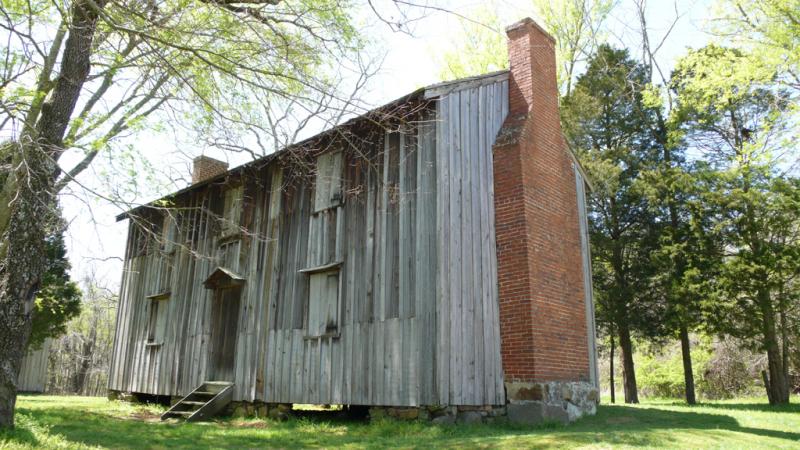Exterior of slave house, Stagville Plantation
Exterior view of a house for enslaved people at Horton Grove at Historic Stagville, North Carolina. Paul Cameron ordered these houses to be built in 1850 in hopes of improving the health of those who had been living in poorly-constructed, leaky, dirt-floored cabins on the site. They are the only surviving two-story houses for enslaved people in North Carolina, and they would likely have housed people with a common family name or lineage, with a single family consisting of 5-7 individuals living in each of the four rooms. Stagville plantation is located in parts of what are now Orange, Durham, Wake, and Granville counties. Established in 1787 by the Bennehan and Cameron families, Stagville was the largest plantation in North Carolina. In 1860 more than nine hundred enslaved people lived on its thirty thousand acres. Most of them worked in the fields growing crops such as tobacco, wheat, corn, potatoes, and sweet potatoes.

Kelo, Dan. Exterior of slave house, Stagville Plantation. April 17, 2008. Photograph. Flickr. https://www.flickr.com/photos/31008243@N06/3173730351.
Creative Commons BY-NC-SA
This item has a Creative Commons license for re-use. This Creative Commons BY-NC-SA license means that you may use, remix, tweak, and build upon the work for non-commerical purposes as long as you credit the original creator and as long as you license your new creation using the same license. For more information about Creative Commons licensing and a link to the license, see full details at https://creativecommons.org/licenses/by-nc-sa/4.0/.